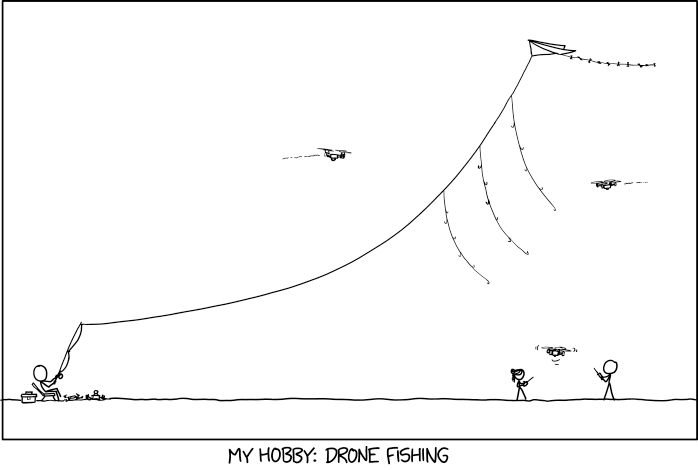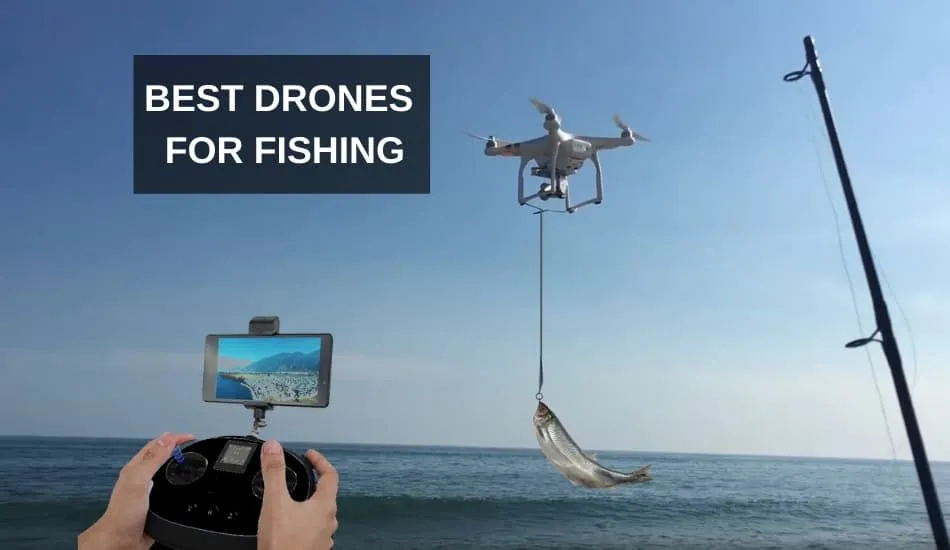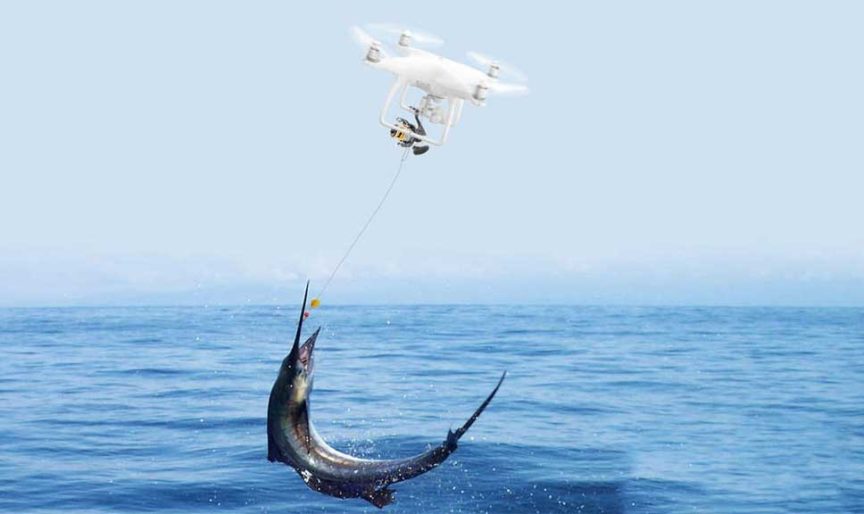
If you're a fisherman looking to land the big catch of your dreams, a drone could be the answer. Drones are a great way to survey a particular area. Some drones even come with a Cable Cam feature, which allows you to fly your drone as if it were a cable. This feature is particularly useful for scouting fishing spots. When not in use, the drone can be folded and stored in your fishing bag.
Fisherman FD1
Is it possible to have a drone that can be used for fishing but not for your own fishing? You might consider purchasing a Fisherman FD1 drone-fishing kit. This drone includes features that can improve your fishing experience. It has an elevated GPS pod, and an altimeterPod for accurate positioning and control. The GPS/altimeter will reduce interference from surrounding environments. The drone's compass will always point to north. This prevents you accidentally setting it back. You can also set the camera to capture a color HD real-time view with a push-button remote release. Remote control range can reach up to 1600m You can also operate the Fisherman FD1 drone from a greater distance with the new remote control.
The SwellPro Fisherman waterproof drone has a HD camera and FPV glasses. It can hold a 2kg bait, and can also drop a 2-kg bait in the water. It can fly up to 30 mins and is waterproofed internally. You can purchase an extra camera and FPV glasses to improve the durability of your Fisherman drone.
Cuta-Copter Ex-1
Cuta-Copter Ex-1, a drone that you can fly yourself, is a great option. This drone allows you to capture amazing pictures and video from a distance. It has a range between 3.5 and 5 hours, and a rechargeable battery that lasts five hours. It has a maximum flight time of 30 minutes. This allows you to cast your bait and then hit the return to home function. The drone is also very stable when hovering so there's no risk of it falling over while you're casting.

The Cuta-Copter EX-1 fishing drone is waterproof and can float on water. The Ex-1 drone has the ability to carry three kilograms (or more) of bait. The drone does not come with a battery or charger. However, the Cuta-Copter app can be used to remotely control the drone while you fish. This gives you the best both of them. Once you've mastered the art of fishing with your Cuta-Copter Ex-1 drone, you'll have an amazing experience with this new technology.
Upair
The Upair is easier to use than other drone fishing tools and can be used for stunning footage. The Upair can fly for 20 minutes on average and has a range up to 0.5 km. The camera has high resolution and the controller has a 7-inch LCD screen. Upair's GPS and FPV monitor transmission ensure that you always receive the best view of the lake you're fishing from. The drone can be programmed with a destination address, and can return to home automatically when the signal is lost.
Upair comes with a Downrigger Attachment that can be attached to the landing gear on your remote-controlled fishing boat. This feature allows you to reduce the fishing work and allow you to concentrate on catching fish. You can attach the downrigger to your bait or fishing line, and the drone will fly up and drop it at the desired location. You can even attach your drone to your fishing boat to drop your bait!
Cosee unmanned aircraft system
The Cosee unmanned aircraft system (UAS) drone fishing kit has a few unique features that make it an exciting new tool for fishing. It lets you cast your line up to a height of more than 98ft and allows you see the fish you are fishing. It even has a fish finder and camera built in, enabling you to document your fishing adventure. This technology is perfect for surf fishing. It allows you to drop your bait far enough away from the boat while still allowing you to reach deep enough to catch the fish.

This unique technology is only available to those who are familiar with the rules and regulations that govern flying your drone over water bodies. When fishing, you'll need to keep the drone at least 40-60 feet from the boat. Also, the drone should be flown straight up. You should keep your drone's speed steady so that you don't run into any buildings, people, or power lines. You can also use this drone to capture other fishermen fishing trips, or to share them to your own followers.
FAQ
Is it necessary to have special training in order to fly a drone
To fly your drone, you don't have to be an expert in flight mechanics. You will only need a remote control unit, and some knowledge about flight mechanics.
You can fly a drone as high as you like without a license.
The FAA has no limits on the maximum height a drone can fly. However, they do require you to register your unmanned aircraft system (UAS), which includes the registration number, model name, weight, size, serial number, manufacturer's name, date manufactured, and other information.
Is it possible to fly a helicopter while driving?
Driving a drone is dangerous, as it could cause an accident or crash into another vehicle. You may also run into pedestrians and other animals. In addition, you could damage your car by hitting power lines, trees, or buildings.
Can I fly my drone within my local park
You can fly drones in parks around the globe. Some countries prohibit the use of drones in parks. This is because of safety concerns. Take a look at our list of legal places to fly drones for entertainment.
What are the rules regarding drone operation?
The FAA must register your drone. This registration process includes submitting information about the device, including its weight, size, battery capacity, and operating frequency. A FAA identification number is also required.
Statistics
- With the top 10% making over $100/h and the bottom 10% making as low as $10/h. (dronesgator.com)
- Research and Markets predict a growth rate of 51.1% over the next five years. (thedroneu.com)
- According to ZipRecruiter, the minimum hourly wage of drone pilots is $20. (thedroneu.com)
External Links
How To
How to Fly Drones for Beginners
A drone can be used to fly remotely controlled aircraft for photography, surveillance, scientific research, hobby and commercial purposes. Drone technology has existed since World War II. DJI's Phantom quadcopters became commercially available in 2010. There have been many types of drones since then, including beginner-friendly drones like the Parrot AR Drone 2.0 and professional-grade multi-rotor crafts like the DJI Mavic Pro.
There are many ways to fly a drone.
-
Remote control: This uses a remote control device that attaches to your hand and allows you control the drone along its flight path. There are two main types of controllers: On/Off switches (like a radio) and joysticks.
-
Manual Control - This method uses a smartphone app to remotely control the drone using GPS coordinates. Follow the instructions of the app to track the exact location you want the drone go.
-
Autonomous flight - The drone takes over the piloting duties. It's basically flying autonomously without any human intervention. A drone must have a builtin camera and sensors capable to capture images and other data.
-
Triggered Flight – This method is very similar to manual flight. The pilot creates a route that the drone will follow until it reaches the destination. After the program is complete, the drone automatically returns to the ground.
-
Landing Gear – A few drones come with landing gear. This allows them land safely in the event of losing power or running out of battery.
-
Goggles - Some pilots wear goggles to protect themselves from debris while operating.
-
Camera - Certain drones come with cameras that allow you to take photos and videos from high above.
-
Obstacles. Some drones can have obstacle avoidance technology that stops them from hitting obstacles.
-
Speed - Drones can reach speeds up to 40 mph.
-
Battery Life - Most drones last between 20 and 3 hours depending on how much power they have.
-
Some drones are capable of traveling up to 30 miles depending upon their make and model.
-
Power source – Some drones require external power sources, others require internal batteries.
-
Weight – Some drones are less than one pound, while other models can be up to four pounds.
-
Size - Drones can range in size from tiny devices that can fit in your palm to heavy crafts that weigh 50 pounds.
-
Price - Drones come in a variety of price categories, including high-end models which can run into the thousands and low-cost options that can start at $100.